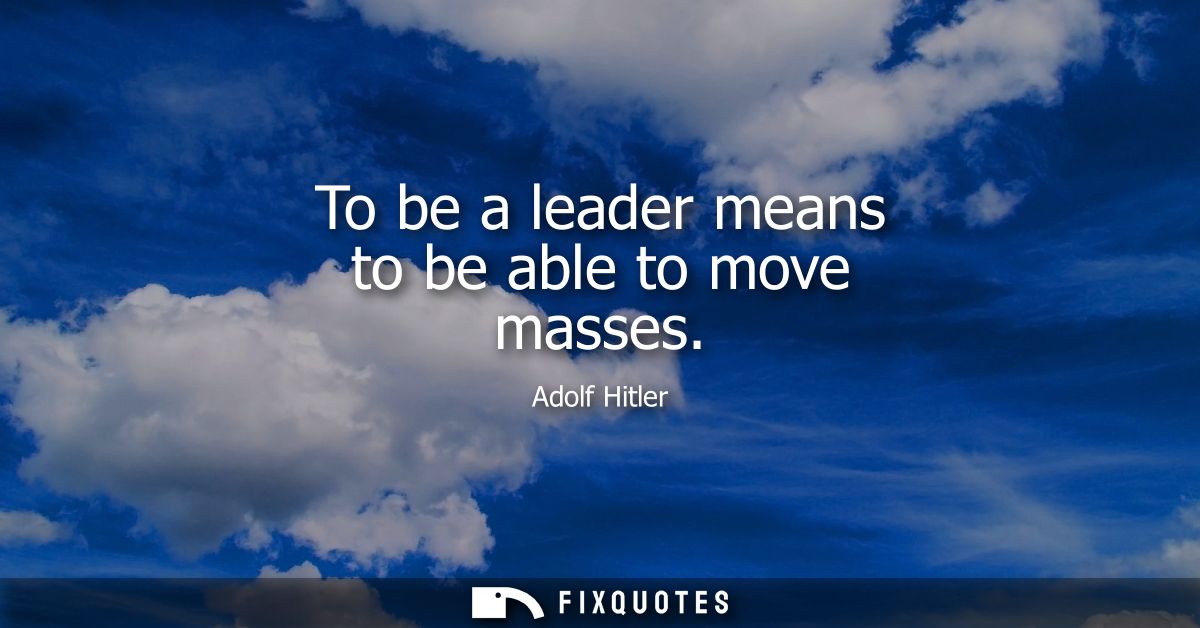"To be a leader means to be able to move masses"
About this Quote
To be a leader capable of moving masses is to possess the influence and authority required to shape the beliefs, actions, and destinies of large numbers of people. The statement underscores the magnitude of a leader’s responsibility and the immense power that comes with it. At its core, this perspective associates leadership with the ability to inspire, direct, and sometimes manipulate public sentiment and collective behavior on a grand scale.
Moving masses involves understanding the hopes, fears, and aspirations of the population. It requires tapping into their emotions, forging a sense of unity, and articulating visions that resonate deeply enough to prompt collective action. Charisma, persuasive communication, and a keen understanding of societal dynamics become crucial tools for any such leader. Yet, the power to move masses is a double-edged sword. While it can be used to unite people toward noble causes and constructive change, it also carries the potential for exploitation, coercion, and disastrous consequences when wielded by those with malicious intent.
History has shown that those who can rally masses behind them hold the ability to shape events far beyond their own individual capacities. Such leaders transcend mere administrative or managerial roles; they become symbols, embodying ideas or ideals that mobilize people. Their success often lies not just in their own abilities, but in their relationship with followers, the cultivation of trust or, alternatively, fear. The movement of masses, therefore, is as much about the psychology of crowds as about the vision of the leader.
Ultimately, the capacity to move masses is an indication of extraordinary social influence. It reflects a balance of vision, communication, and psychological insight. The gauge of true leadership, as implied, is found in the sweeping impact that extends far beyond the leader’s immediate circle, shaping the destinies of communities, nations, or even the world.
About the Author

